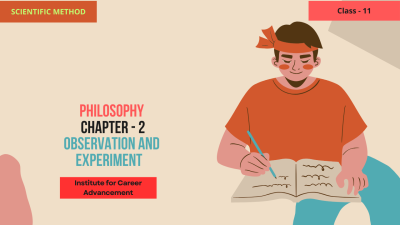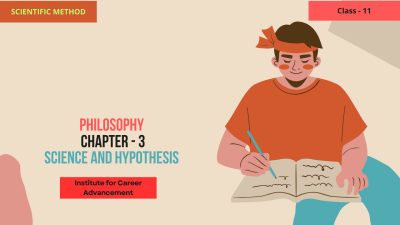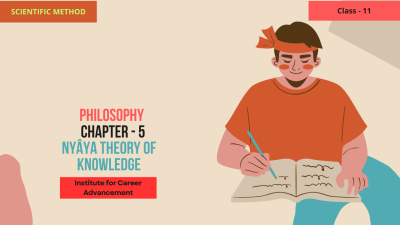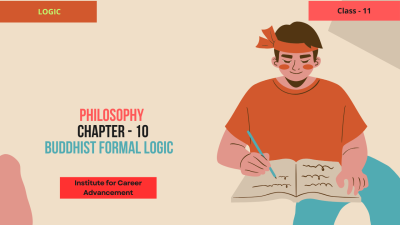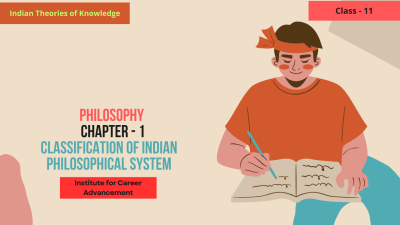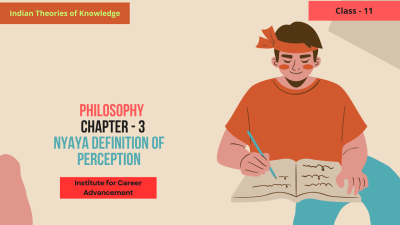Course description
The concept of Purusharthas (goals of human life) is a key theme in Indian philosophy, particularly within Hinduism. It represents the four fundamental aims that guide an individual's pursuit of a balanced, meaningful, and ethical life. These four goals—Dharma, Artha, Kama, and Moksha—are considered essential for holistic living, fulfilling both material and spiritual needs.
This course provides an in-depth exploration of each of these four goals, analyzing their roles and interconnections, as well as their significance in both individual and societal contexts. The course will also cover how these goals shape ethical decision-making, guide personal conduct, and help individuals lead a purposeful life.
Course Structure and Key Concepts:
Introduction to Purusharthas:
Overview of the Purusharthas as the four primary goals of human life in Hindu philosophy.
Understanding the interrelationship between Dharma (righteousness), Artha (material wealth), Kama (pleasure), and Moksha (liberation).
The role of Purusharthas in achieving a well-balanced life that meets spiritual, material, and ethical needs.
Dharma (Righteousness):
Definition and understanding of Dharma as the moral, ethical, and righteous duties individuals must follow.
Dharma as a means of living a virtuous life, performing duties, and maintaining social and cosmic order.
The relationship of Dharma with the individual's personal responsibilities (e.g., family duties, social roles) and universal principles (e.g., truth, compassion, non-violence).
Dharma in context with other Purusharthas: how ethical duties should guide the pursuit of material wealth (Artha) and pleasure (Kama).
Artha (Material Prosperity):
Definition of Artha as the pursuit of wealth, prosperity, and success, both materially and professionally.
Understanding the role of Artha in supporting one's family, community, and spiritual practices.
The ethical dimension of Artha: how wealth should be acquired and used responsibly, ensuring it aligns with Dharma (righteousness).
Balancing the pursuit of Artha with Kama (pleasure) and Moksha (spiritual liberation), without compromising Dharma.
Kama (Pleasures and Desires):
Understanding Kama as the pursuit of sensual pleasures, emotional fulfillment, and personal desires.
The importance of Kama in leading a satisfying and meaningful life while being mindful of ethical boundaries.
The relationship of Kama to Dharma: how desires and pleasures should align with ethical living and the greater good.
The balance between Kama, Artha, and Dharma to ensure that the pursuit of pleasure does not harm others or lead to excess.
Moksha (Liberation):
Definition of Moksha as spiritual liberation or freedom from the cycle of samsara (birth, death, and rebirth).
Understanding Moksha as the ultimate goal of life, achieved through the realization of one's true nature, detachment from worldly attachments, and self-realization.
The relationship between Moksha and the other Purusharthas: how following Dharma, pursuing Artha, and enjoying Kama in a balanced way lead to spiritual growth and liberation.
The role of meditation, devotion, and wisdom in attaining Moksha.
The Interrelationship Between the Purusharthas:
How Dharma, Artha, Kama, and Moksha are interconnected and complementary in leading a balanced and fulfilling life.
The need to balance the material and spiritual goals, ensuring that one does not overshadow the other.
Ethical dilemmas and how to navigate them using the principles of the Purusharthas.
Case studies and examples from Hindu texts (e.g., Bhagavad Gita, Ramayana, Mahabharata) to understand the application of the Purusharthas in real life.
Relevance of Purusharthas in Modern Life:
Examining how the Purusharthas apply in contemporary society, particularly in balancing material success with ethical living and spiritual fulfillment.
The importance of Dharma in personal conduct, Artha in career and business ethics, Kama in relationships, and the pursuit of Moksha through self-awareness and mindfulness.
Discussion on modern ethical challenges (e.g., consumerism, sustainable living, work-life balance) and how the Purusharthas can guide individuals in making decisions.
পুরুষার্থের ধারণা (মানব জীবনের লক্ষ্য) ভারতীয় দর্শনের একটি মূল বিষয়, বিশেষ করে হিন্দুধর্মের মধ্যে। এটি চারটি মৌলিক লক্ষ্যের প্রতিনিধিত্ব করে যা একজন ব্যক্তির ভারসাম্যপূর্ণ, অর্থপূর্ণ এবং নৈতিক জীবনযাপনের পথ দেখায়। এই চারটি লক্ষ্য-ধর্ম, অর্থ, কাম এবং মোক্ষ-সামগ্রিক জীবনযাপনের জন্য প্রয়োজনীয় বলে মনে করা হয়, যা বস্তুগত এবং আধ্যাত্মিক উভয় চাহিদা পূরণ করে।
এই কোর্সটি এই চারটি লক্ষ্যের প্রত্যেকটির গভীর অনুসন্ধান প্রদান করে, তাদের ভূমিকা এবং আন্তঃসংযোগের পাশাপাশি ব্যক্তিগত এবং সামাজিক উভয় প্রেক্ষাপটে তাদের তাৎপর্য বিশ্লেষণ করে। এই লক্ষ্যগুলি কীভাবে নৈতিক সিদ্ধান্ত গ্রহণকে রূপ দেয়, ব্যক্তিগত আচরণকে গাইড করে এবং ব্যক্তিদের একটি উদ্দেশ্যমূলক জীবনযাপন করতে সহায়তা করে সে সম্পর্কেও এই কোর্সে আলোচনা করা হবে।
কোর্সের কাঠামো এবং মূল ধারণাগুলিঃ
পুরুষার্থদের পরিচিতিঃ
হিন্দু দর্শনে মানব জীবনের চারটি প্রাথমিক লক্ষ্য হিসাবে পুরুষার্থদের সংক্ষিপ্ত বিবরণ।
ধর্ম (ধার্মিকতা) অর্থ (বস্তুগত সম্পদ) কাম (আনন্দ) এবং মোক্ষের (মুক্তি) মধ্যে আন্তঃসম্পর্ককে বোঝা
আধ্যাত্মিক, বস্তুগত এবং নৈতিক চাহিদা পূরণ করে এমন একটি সুষম জীবন অর্জনে পুরুষার্থদের ভূমিকা।
ধর্ম (সততা)
নৈতিক, নৈতিক ও ধার্মিক কর্তব্য হিসাবে ধর্মের সংজ্ঞা ও বোধগম্যতা প্রত্যেক ব্যক্তিকে অবশ্যই অনুসরণ করতে হবে।
পুণ্যময় জীবনযাপন, কর্তব্য পালন এবং সামাজিক ও মহাজাগতিক শৃঙ্খলা বজায় রাখার মাধ্যম হিসাবে ধর্ম।
ব্যক্তির ব্যক্তিগত দায়িত্ব (e.g., পারিবারিক কর্তব্য, সামাজিক ভূমিকা) এবং সার্বজনীন নীতিগুলির সাথে ধর্মের সম্পর্ক (e.g., সত্য, সমবেদনা, অহিংসা)
অন্যান্য পুরুষার্থদের প্রসঙ্গে ধর্মঃ কীভাবে নৈতিক কর্তব্যগুলি বস্তুগত সম্পদ (অর্থ) এবং আনন্দ (কাম) অনুধাবন করতে পরিচালিত করা উচিত
অর্থ (বস্তুগত সমৃদ্ধি)
বস্তুগত ও পেশাগত উভয় ক্ষেত্রেই সম্পদ, সমৃদ্ধি এবং সাফল্যের সাধনা হিসাবে অর্থের সংজ্ঞা।
একজনের পরিবার, সম্প্রদায় এবং আধ্যাত্মিক অনুশীলনকে সমর্থন করার ক্ষেত্রে অর্থের ভূমিকা বোঝা।
অর্থের নৈতিক মাত্রাঃ কীভাবে সম্পদ অর্জন করা উচিত এবং দায়িত্বের সাথে ব্যবহার করা উচিত, এটি নিশ্চিত করে যে এটি ধর্মের সাথে সামঞ্জস্যপূর্ণ (ধার্মিকতা)
ধর্মের সাথে আপস না করে কাম (আনন্দ) এবং মোক্ষের (আধ্যাত্মিক মুক্তি) সাথে অর্থের অনুসরণের ভারসাম্য বজায় রাখা।
কাম (আনন্দ ও আকাঙ্ক্ষা)
কামকে ইন্দ্রিয়গত আনন্দ, আবেগগত পরিপূর্ণতা এবং ব্যক্তিগত আকাঙ্ক্ষার সাধনা হিসাবে বোঝা।
নৈতিক সীমানা সম্পর্কে সচেতন থাকার পাশাপাশি সন্তোষজনক ও অর্থপূর্ণ জীবনযাপনে কামের গুরুত্ব।
ধর্মের সাথে কামের সম্পর্কঃ কীভাবে ইচ্ছা এবং আনন্দ নৈতিক জীবনযাপন এবং বৃহত্তর ভালোর সাথে সামঞ্জস্যপূর্ণ হওয়া উচিত।
কাম, অর্থ এবং ধর্মের মধ্যে ভারসাম্য নিশ্চিত করে যে আনন্দের সাধনা যেন অন্যের ক্ষতি না করে বা অতিরিক্ত হয় না।
মোক্ষ (মুক্তি)
মোক্ষের সংজ্ঞা আধ্যাত্মিক মুক্তি বা সংসারের চক্র থেকে মুক্তি (জন্ম, মৃত্যু এবং পুনর্জন্ম)
মোক্ষকে জীবনের চূড়ান্ত লক্ষ্য হিসাবে বোঝা, একজনের প্রকৃত প্রকৃতির উপলব্ধি, পার্থিব আসক্তি থেকে বিচ্ছিন্নতা এবং আত্ম-উপলব্ধির মাধ্যমে অর্জন করা।
মোক্ষ এবং অন্যান্য পুরুষার্থদের মধ্যে সম্পর্কঃ কীভাবে ধর্ম অনুসরণ করা, অর্থ অনুসরণ করা এবং ভারসাম্যপূর্ণ উপায়ে কাম উপভোগ করা আধ্যাত্মিক বৃদ্ধি এবং মুক্তির দিকে পরিচালিত করে।
মোক্ষ অর্জনে ধ্যান, ভক্তি এবং প্রজ্ঞার ভূমিকা।
পুরুষার্থদের মধ্যে পারস্পরিক সম্পর্কঃ
ভারসাম্যপূর্ণ ও পরিপূর্ণ জীবনযাপনে ধর্ম, অর্থ, কাম এবং মোক্ষ কীভাবে আন্তঃসংযুক্ত এবং পরিপূরক।
বস্তুগত এবং আধ্যাত্মিক লক্ষ্যগুলির মধ্যে ভারসাম্য বজায় রাখার প্রয়োজন, যাতে একটি অন্যটিকে ছাপিয়ে না যায়।
নৈতিক দ্বিধাদ্বন্দ্ব এবং পুরুষার্থদের নীতিগুলি ব্যবহার করে কীভাবে সেগুলি পরিচালনা করা যায়।
বাস্তব জীবনে পুরুষার্থদের প্রয়োগ বোঝার জন্য হিন্দু গ্রন্থগুলি (e.g., ভগবদ গীতা, রামায়ণ, মহাভারত) থেকে কেস স্টাডি এবং উদাহরণ।
আধুনিক জীবনে পুরুষার্থদের প্রাসঙ্গিকতাঃ
সমসাময়িক সমাজে, বিশেষত নৈতিক জীবনযাপন এবং আধ্যাত্মিক পরিপূর্ণতার সঙ্গে বস্তুগত সাফল্যের ভারসাম্য বজায় রাখার ক্ষেত্রে পুরুষার্থরা কীভাবে প্রয়োগ করেন তা পরীক্ষা করা।
ব্যক্তিগত আচরণে ধর্মের গুরুত্ব, কর্মজীবন ও ব্যবসায়িক নীতিতে অর্থ, সম্পর্কের ক্ষেত্রে কাম এবং আত্ম-সচেতনতা ও মননশীলতার মাধ্যমে মোক্ষের সাধনা।
আধুনিক নৈতিক চ্যালেঞ্জ (e.g., ভোগবাদ, টেকসই জীবনযাপন, কর্ম-জীবনের ভারসাম্য) এবং কীভাবে পুরুষরা সিদ্ধান্ত গ্রহণে ব্যক্তিদের গাইড করতে পারে সে সম্পর্কে আলোচনা।








